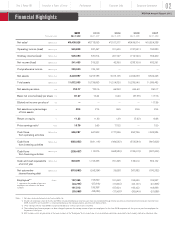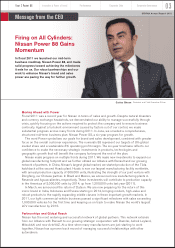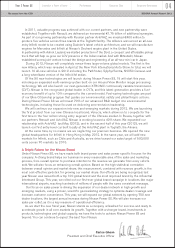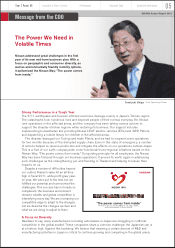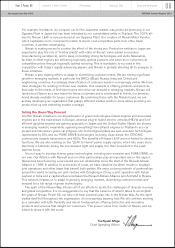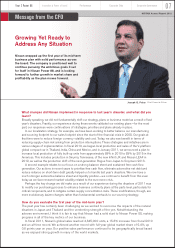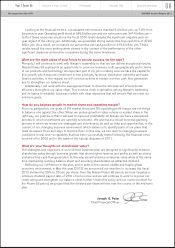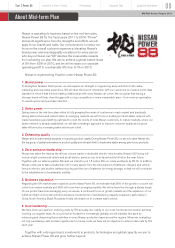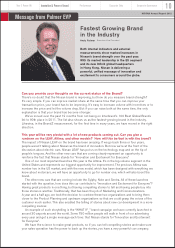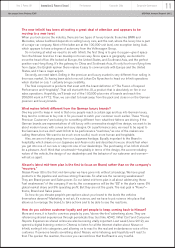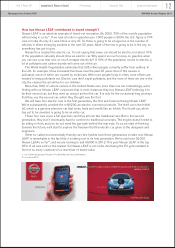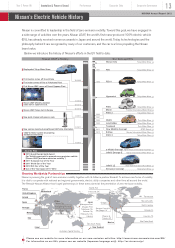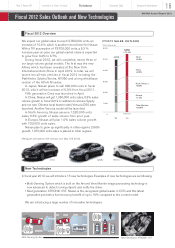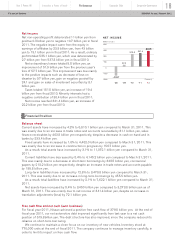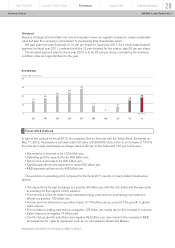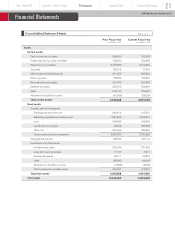Nissan 2012 Annual Report Download - page 13
Download and view the complete annual report
Please find page 13 of the 2012 Nissan annual report below. You can navigate through the pages in the report by either clicking on the pages listed below, or by using the keyword search tool below to find specific information within the annual report.
How has Nissan LEAF contributed to brand strength?
Nissan LEAF is an absolute example of stand-out innovation. By 2050, 70% of the world’s population
will be living in a city*1. If we look at units in operation per 1,000 people in 2009, the U.S. figure is 774
cars. In India, it’s only 31, and China is only 47. So there is going to be a huge rise in the number of
vehicles in these emerging markets in the next 20 years. Most of the rise is going to be in the city, so
something has got to give.
Nissan thus created the electric car. I’m not saying that every car should be electric, but about 10%
of the population naturally should drive an electric car. Why spend so much money on gasoline when
you can use a car that runs on much cheaper electricity? If 10% of the population moves to electric, a
lot of pollutants and carbon dioxide will come out of the air.
The World Health Organization estimates that 235 million people currently suffer from asthma. In
the U.K. for example, it has increased five times over the past 25 years. One of the causes is
pollutants, some of which are caused by motorcars. With more people living in cities, more efforts are
needed to keep pollutants out. Electric cars don’t expel pollutants, and the more of them we use in the
city, the cleaner the air will be for our children.
More than 80% of vehicle owners in the United States own more than one car. Interestingly, we’re
finding with our Nissan LEAF customers that in most instances they buy Nissan LEAF believing it to
be their second car, but they wind up using it as the first car. It is only for the occasional long journeys
that they use the second car, which they thought was the first.
We will have four electric cars in the first generation, the first and foremost being Nissan LEAF.
We’ve subsequently unveiled the e-NV200, an electric commercial vehicle. The third car is the Infiniti
LE, which is a genuine premium car that looks, feels and smells like an Infiniti. The fourth car, which
has yet to be unveiled, is going to be an entry car.
These four cars cover a full spectrum, and they all look like traditional cars. But in the second
generation, they won’t necessarily have to conform to traditional concepts. The engine doesn’t need to
be sitting in front, and you do not need the gas tank behind the rear seat. So as we start of thinking
towards the future, we’ll start to explore the freedom that the electric car gives to the designers and
engineers.
Other so-called environmentally friendly cars like hybrids took three generations to take root. Nissan
LEAF is remarkable in the fact that it is taking root in its first generation. We’ve sold over 32,000
Nissan LEAFs so far*2, and we are looking to sell 40,000 in 2012. This puts Nissan LEAF in the top
25% of all cars sold on the market. So Nissan LEAF is not niche. And being the EV gold medalist in
front of so many customers is a real driver of brand value.
*1 from “World Urbanization Prospects The 2009 Revision” by United Nations
*2 as of June 2012
Innovation & Power of brand
Year 2 Power 88 Performance Corporate Data Corporate Governance
12
NISSAN Annual Report 2012Message from Palmer EVP


